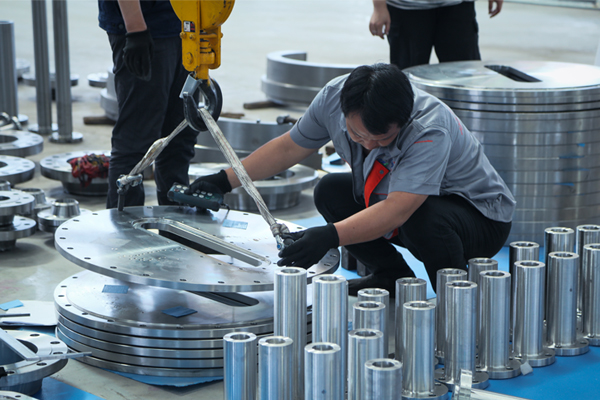Different welding forms: flat welds cannot be checked by radiography, but butt welds can be checked by radiography. Fillet welding is used for flat welding flanges and flanges, while girth welding is used for butt welding flanges and pipes. A flat weld is two fillet welds and a butt weld is a butt weld.
The difference between plain welded flange with neck and plain welded flange without neck is that there are more plain welded flanges with neck than flanges without neck welding in the welded part of the pipe. A flat welded flange without a neck is a flat flange, and a boss without a flange is a flat fillet. The weld between the neck butt welding flange and the receiving joint is a B weld.

The weld between the flat neck flange and the receiving joint belongs to the C joint, and the non-destructive testing after welding is different. Compare the difference between flat welding flange and butt welding flange. The raw material is different: the raw material of the neck flat welding flange is processed from the ordinary steel plate, and its thickness can meet the requirements. The raw materials of butt welding flange with neck are mostly processed from forged steel parts.
The nominal pressure is different: the nominal pressure of neck flat welding flange is 0.6 -- 4.0MPa, while the nominal pressure of neck butt welding flange is 1--25MPa. Obviously, the application pressure grade of the flat neck welded flange is lower. Different connection methods: The structural difference between neck flat welding flanges and neck butt welding flanges is that the receiver and flange are connected differently. Neck flat welded flanges are usually receptacle and flange Angle connections, while neck butt welded flanges are flange and receptacle butt joints.
Post time: Nov-08-2022
